May 24, 2025
Author:Amanda Lyu
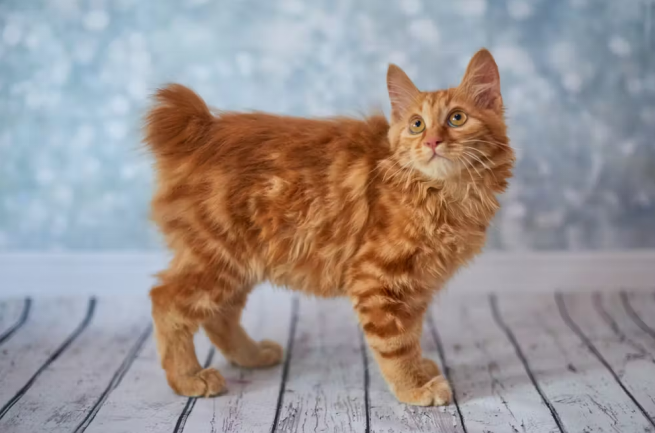
Have you ever seen a kitten race around a corner and realized something was missing—a tail? That surprise often leads to the same question: what kind of cat is that? These special cats are called bobtails. They show that even without a full tail, a cat can be just as playful, graceful, and full of personality.
In this article, we’ll explore everything you need to know about cats with no tail. From their history and unique features to care tips and what makes them so lovable, you’ll discover why living with a bobtail can be a truly special experience.
A bobtail’s back end looks as if nature hit the pause button before adding the final flourish. Some carry a 'pom-pom' that waves like a tiny flag. Others sport nothing more than a soft curve of bone. No two stumps look the same. What matters is that the shortened spine changes neither confidence nor grace. In fact, when a cat with no tail dashes around furniture you may notice tighter turns and less risk of knocking over fragile décor.
The common breeds include:
● Manx – the classic Isle of Man native that can be rump-flat (called 'rumpy') or have a slight knob.
● Japanese Bobtail – slim, long-legged, famous in folklore and lucky cat statues.
● American Bobtail – rugged, muscular, often seen on hiking leashes.
● Pixie-Bob – a domestic cat bred for a wild-look coat.
● Kurilian Bobtail – strong jumper, hails from Russian islands, loves water play.
● Cymric – essentially a long-haired Manx, with a bunny-soft coat.
Each brings its own look, yet all share the missing length at the rear.
Why does the tail stop growing? In most bobtails a single dominant gene trims the spinal vertebrae. If a kitten inherits one copy, it sports the short tail with no further issue.
Two copies may cause serious spinal gaps, so ethical breeders keep careful records and avoid risky pairings. Because the gene sits near the backbone, nerves and organs may or may not feel the effect. Responsible vets suggest early checks so a cat with no tail starts life strong.
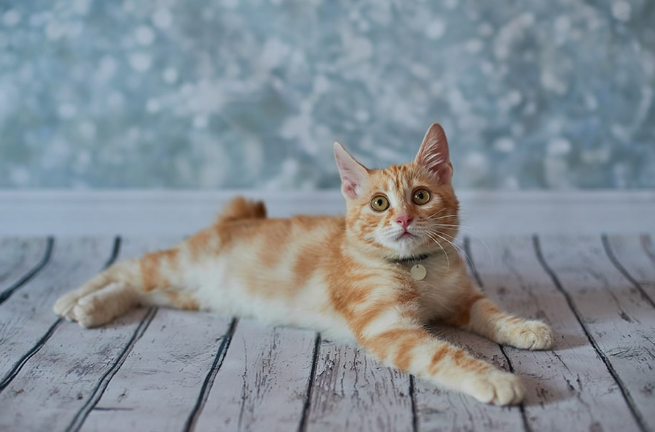
You may hear talk of 'Manx syndrome.' This term covers a group of spine and bowel troubles that arise when the vertebrae end too soon. Signs include weak back legs, slow potty training, or bladder leaks. An early X-ray shows the length of the spine, and many kittens grow up free from any issue.
Keep litter boxes low-sided so movement stays easy. If stress leads to 'bathroom protests,' rule out injury first, then tackle behavior. Should your buddy leave surprise piles on fabric you can study ways to end those stressful accidents on bedding by reading helpful advice.
Fleas find stubby rumps easy to hide under thick fur, so weekly combing is wise. If you spot specks that hop, turn to a full guide on flea control. Healthy skin means calm grooming sessions and a brighter coat.
Hydration keeps joints loose and kidneys clear. A fountain helps cats drink more because the moving water feels fresh. Still choosing between a flowing spout and a still bowl? Scan the simple fountain versus bowl debate and decide. Once you pick a fountain, use this care guide so pumps never clog.
A well-balanced diet guards organs too. For kidney safety tips, see expert notes on long-term care. Feed set meals instead of free piles to avoid weight gain. If work keeps you away, a reliable device can help—learn the perks of timed feeders.
Bobtails look compact, yet their energy rivals many long-tailed cousins. The Manx may fetch toys like a dog; the Japanese type loves puzzle games. Offer lots of play to burn fuel and avoid furniture destruction. Need inspiration? Browse these high-value toys and rotate them weekly so boredom never wins.
Some owners fear the missing tail might curb communication. Cats do speak with tail swishes, but they also use ears, whiskers, eyes, and voice. Soon you will read the signals with ease. A Karelin Bobtail tilts ears forward when happy and chirps when excited to see dinner. That sound gets louder when an automatic feeder whirs to life!
Indoor bobtails adapt to small flats, yet many adore fresh air. Harness training starts young and uses short sessions. If you plan a weekend drive, prep by following these road trip tips. Pack a compact litter box and a favorite toy, and never leave the carrier door open while the engine runs.
Most bobtails shed at the same rate as standard breeds. Brush twice a week and daily during spring coat blowouts. Manx and Cymric fur traps fluff inside clothes; stop it before wash day by checking tricks for lifting loose fur.
Baths seldom prove necessary. If mud splashes on a Kurilian explorer, warm water and mild shampoo will do. Dry well, since the short tail area retains moisture under dense fur.
Clip nails every two weeks, inspect ears for wax, and wipe eye corners. These easy steps, paired with sound diet and clean water, keep a cat with no tail in top form. For a fresh list of wellness habits, scan these simple health steps.
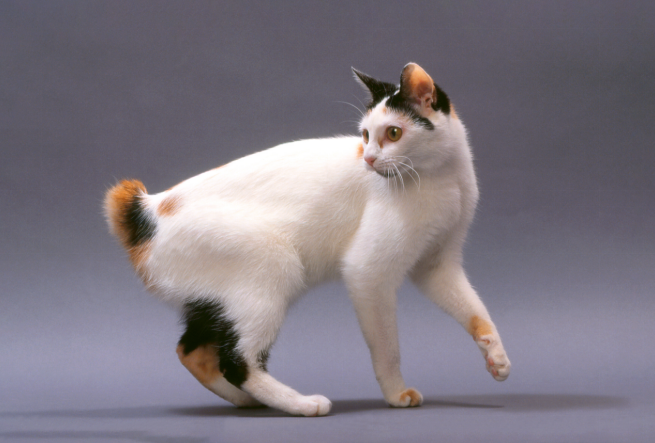
Think of the tail as a natural rudder. Remove it and the body learns to balance through core strength. Engage that core! Climbing trees, puzzle feeders, and laser tags all help. When bobtails hunt in play they tap deep instincts. If you ever question why the little predator stalks slippers at night, see this clear look at the hunting instinct.
Joint jumps need cushioned landings. Place ramps near tall couches so a cat with no tail avoids repeated long drops that can strain the spine. Kurilian Bobtails can leap three times their height, so watch ceiling fans!
Short-tailed breeds burn calories fast, but snacks add up. Portion meals with a kitchen scale or smart feeder. Spay or neuter to keep hormones level; the change often eases roaming urges in American Bobtails. If you wonder about the bigger picture of surgical choice, read this clear piece on spaying and neutering.
Protein should lead the menu. Seek food with named meat as the first ingredient. Offer small amounts of cooked fish once a week if your vet agrees; it supplies omega-3s that shine the coat. Provide fresh water day and night. Some owners add broth ice cubes to bowls for fun.
A story claims Vikings brought bobtails to the Isle of Man. Another says lightning scared a cat through a barn door, trimming off the tail. Fun folklore aside, the gene is the true cause. Many people also think a bobtail cannot climb trees or run fast. Watch a cat with no tail zip up a scratching post and the myth vanishes.
Superstition once named tail-less cats as lucky tokens for sailors, who believed they kept the ship safe in storms. Japanese shops still display maneki-neko statues that show a raised paw and short tail as a sign of wealth. That symbol draws travelers from around the globe.
Shelters sometimes list bobtails, yet they vanish fast once posted. Call ahead, leave your name, and visit often. When choosing a breeder, ask:
1. Do you X-ray kittens for spine length?
2. Do parents have genetic tests?
3. Can I see health records?
4. What social play do kittens receive before eight weeks?
Sound answers show pride, not pushy sales talk. A clear contract will note a return clause. Fine breeders stand by the kitten for life.
Before your new friend arrives, cat-proof wires and breakables. Buy at least two litter boxes and keep them on the same floor as food. Bobtails love water play, so consider a quality fountain. If you still compare features, read this guide on flowing water perks.
Prepare a safe room with soft bedding. A low step ottoman lets a young Cymric jump onto beds without straining hips. Use scent-soaked cloth from the breeder for a smooth welcome.
With care, bobtails live 13–16 years, some even longer. Senior diets cut calories but raise joint supplements. Make vet checks twice a year after age ten. Keep ramp access to favorite sunny spots. Add extra litter boxes with lower sides for stiff legs. If climbing seems hard, massage back muscles with gentle strokes.
Water intake often falls in older cats. Track sips by marking bowl levels or using smart fountains that log data. Proper hydration keeps organs strong, and many guardians find success by adding tiny broth servings. If you need daily reminders, set phone s or print a chart.
A cat with no tail in old age still walks with dignity. Respect slower pace and keep play short but daily. Even ten minutes of gentle wand teasing can brighten eyes and fight weight gain.
Life with a bobtail brims with laughter and fond memories. You will gain an agile partner who can leap straight onto your shoulder and ride like a pirate’s parrot. You will learn to read small ear twitches instead of tail flicks. You will enjoy cozy nights as the warm ball curls at your hip and vibrates with content purrs.
Take photos in good light to show the cute stump silhouette, and share stories with other owners online. Many post snapshots of American Bobtails trekking mountain trails, Manx kittens riding bike baskets, or Japanese Bobtails practicing clicker tricks.
To find inspiration for black-furred short-tails, browse the gallery of black coats. Maybe you will fall for a smoky hue next.
Next time someone asks, 'Does your cat miss the tail?' smile and say, 'Not at all.' A cat with no tail moves with balance born of smart design, shows spirit that rivals any long-tailed cousin, and melts hearts with wide eyes and steady trust. Care for the spine, feed top food, offer safe jumps, and keep vet checks on schedule. You will earn love that fills rooms larger than any tail ever could.
So, are you ready to open the door to one of the most unique and joyful bonds a pet lover can experience? Step forward. A bobtail is waiting, rump hardly taller than a tuft, but heart immeasurable.
Label:
Popular Post

What to Feed a Sick Dog With No Appetite? [2025 Guide]
May 16, 2023

Troubleshooting Common Issues with Automatic Pet Feeders: Tips & Tricks for Pet Owners
Oct 26, 2023
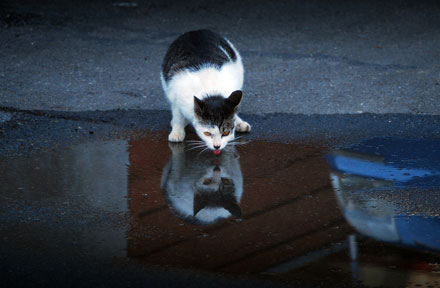
Why Does My Cat Cough After Drinking Water? 8 Potential Reasons
Mar 13, 2023
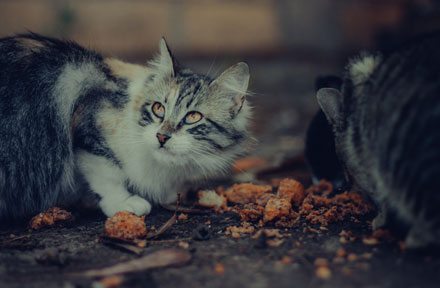
My Cat Only Eats A Little at A Time - What to Do?
Feb 27, 2023
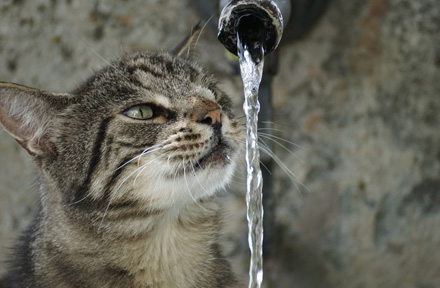
Why is My Cat Throwing up Water? Top 5 Causes Here
Feb 08, 2023
$99.99
$129.99
Copyright © 2025 WOPET. All Rights Reserved.